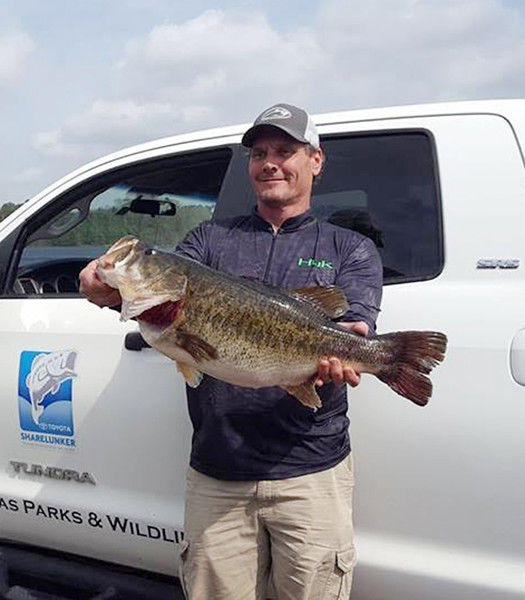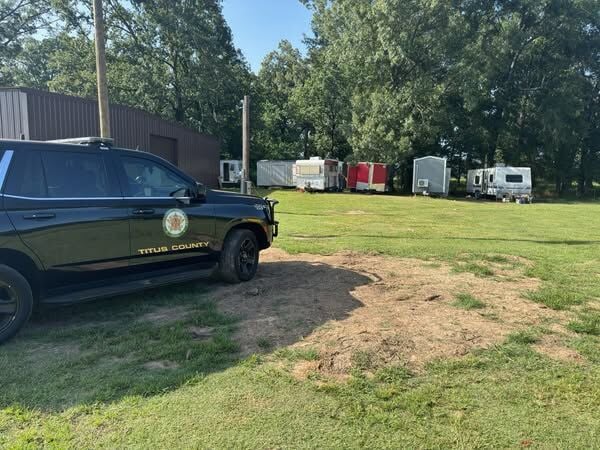Texas has a number of small lakes known for producing big bass
Published 6:42 am Monday, March 13, 2017

- TPWD/Courtesy TPWD burN TECHNICIANS use a drip torch to set fire to a recently thinned timber site on the Caddo Lake Wildlife Management Area to eliminate fuel on the ground and improve wildlife habitat.
STEVE KNIGHT/steve@texasalloutdoors.com
Let’s face it there are coves on Toledo Bend, Sam Rayburn, Falcon and Lake Fork bigger than 942 acres, but that is the combined size of the two lakes that have produced Toyota ShareLunkers this season.
If nothing else it proves that size doesn’t matter when it comes to producing big bass. At 250 acres Marina Creek Reservoir near Fort Worth was the first lake to produce a ShareLunker entry this year, a 13.07-pound fish. More recently Lake Naconiche, a 642-acre lake near Nacogdoches, produced the second, a 13.06-pounder.
Big bass from little lakes aren’t unprecedented. In fact it may be more common than most realize because fishermen who have found good small lakes are often reluctant to give up their secret. But there are some like Mill Creek, a 247-acre lake near Canton, and Tyler State Park Lake that have found their way into the history of ShareLunker entries.
It is not surprising that Marine Creek and Naconiche produced big fish. Both have been part of a Texas Parks and Wildlife Department research project looking at the offspring of previous ShareLunker entries.
Naconiche, one of the state’s newer lakes, got an even bigger boost since its impoundment in 2009 and public opening in 2012. Since it was impounded TPWD has stocked 380,000 Florida largemouth bass, 100,000 ShareLunker offspring and an additional 700 retired brood fish between 3 and 7 pounds.
Those retired brooders could explain a ShareLunker in just eight years compared to the normal nine to 11 years after stocking typically seen in other cases.
The newfound publicity is likely to attract bigger crowds to the two lakes, but that doesn’t mean fishermen do not have other diminutive options around the state.
“I had six lakes come to mind right off the bat. One of them is in Brian’s (VanZee) region,” said Spencer Dumont, TPWD Inland Fisheries Region 2 Director. “Hords Creek Lake is a 510-acre U.S. Army Corps of Engineer lake near Coleman. Let’s just say if I was to wish for ashes of my dead self to be spread over a lake, it would be Hords Creek.”
Dumont said Hords Creek has never produced a ShareLunker, but it is full of 5- to 10-pound fish.
“There are so many big bass in there that even I have managed to catch three over 10. I think it’s always maintained that quality population because of its small size, but also because of the frequent resets where water level drops for a couple to a few years, promoting lots of terrestrial plant growth, followed by a year or two of stable water levels. It’s very productive and deep enough to weather the drought periods and provide that deep-water habitat those larger fish often desire,” said Dumont, who was previously a department biologist in San Angelo before moving to Tyler.
The remainder of Dumont’s list of little giants begins with Kurth Lake, a 726-acre reservoir near Lufkin. It was originally built to hold water for a nearby Southland Paper mill. It was purchased by the City of Lufkin in 2009 from a predecessor of Southern who had closed the mill.
“This lake is clear and has ample hydrilla, about 20-40 percent of the surface area. It’s loaded with 3- to 6-pound fish and has plenty of sure enough behemoths. For those anglers that like to sight fish and flip deep hydrilla, this is the place to go,” Dumont said.
He said the lake’s trophy potential has benefitted greatly from a 16-inch maximum length limit suggested by TPWD biologist Todd Driscoll.
Another lake on Dumont’s list is the 160-acre Bellwood Lake west of Tyler.
“This lake is one of our selective breeding program research lakes. Although it’s too early to know anything about how the research bass are doing there, even without selectively bred bass, this lake always amazes our biologists when they sample it. It’s typically rare for us to collect 5-pound plus bass. Not here. And these fish are stocky, and mean,” Dumont explained.
He added the shallow lake has an abundance of vegetation and plenty of shad. It is protected by an even more aggressive 18-inch minimum length limit.
Tyler State Park Lake is the best-know secret in East Texas. It certainly isn’t a numbers lake and the time to fish it is pre-spawn after the bass have been gorging all winter on rainbow trout stocked in the lake for park visitors.
“TSP Lake has produced two ShareLunkers and several other fish that were very close. Outside of being one of the most scenic lakes I’ve ever seen, it reminds me of some of those California lakes, deep and clear. Bass abundance is low, but forage is such that some of these bass get to very large sizes. If you’re a kayaker, you can’t go wrong,” Dumont said.
From there Dumont goes to Lake Timpson, a 222-acre lake near the town of Timpson.
“Timpson has a 14- to 21-inch slot. It has consistent recruitment, like most East Texas lakes, good growth and quality habitat to produce good fish,” Dumont said.
His final selection is the 447-acre Pinkston Lake.
“Pinkston once held the state record, a 16.9-pound beast caught in 1986. It’s also produced a ShareLunker. It has a 14- to 21-inch slot. Pinkston has lots of off-shore timber and creek channels, is very dendritic (lots of coves and creek arms), and is often ringed with hydrilla,” Dumont said.
Surveys on the lake in recent years show it to have one of the most abundant bass populations in the area, topping both Toledo Bend and Sam Rayburn.
Not all of the quality small lakes are in East Texas. VanZee, the Region 1 Director offered two more Central Texas lakes, the 469-acre Lady Bird Lake in downtown Austin and the 180-acre Lake Pflugerville.
VanZee said about Lady Bird Lake, “The largemouth bass population is managed with 14- to 21-inch slot length limit and exhibits consistent recruitment. Quality-size bass are routinely caught in healthy numbers every year.”
VanZee said the lake produced a ShareLunker in 2014 and that there have been a number of confirmed reports of double-digit bass being caught.
Local rules do not allow the use of gas engines on the lake, reducing fishing to kayaks, canoes or bass boats using electric trolling motors only.
“Lady Bird Lake provides urban angling at its best, with the beautiful Austin skyline in the background. A very productive system, this lake also holds the most fish species state records of any lake in Texas. Still bass are sought out by most anglers, who regularly report excellent fishing experiences,” VanZee noted.
Located just north of Austin, Lake Pflugerville is a relatively new lake. Like Lady Bird Lake, big motors are not permitted, but there is a kayak and canoe launch ramp and a number of fishing piers.
“The lake is full of aquatic vegetation habitat, consisting mainly of hydrilla and American pondweed. This habitat, in conjunction with initial Florida largemouth bass stockings and an 18-inch minimum length limit, has proven well in a lake that is experiencing the prime of the new lake effect. In the past couple of years, 11- and 12-pound bass have been confirmed caught in this lake. Many quality fish are also reported by anglers. Lake Pflugerville is a nice option, just outside the big city for anglers seeking quality bass who may not own a bass boat,” VanZee said.
These little lakes prove that bigger is not always better when it comes to bass fishing lakes.
Have a comment or opinion on this story? Contact outdoor writer Steve Knight by email at outdoor@tylerpa per.com. Follow Steve Knight on Facebook at Texas AllOut doors.






